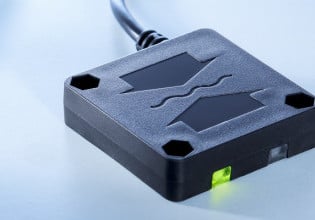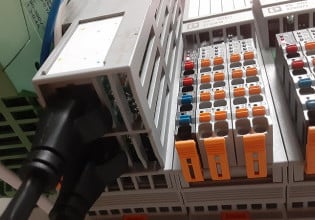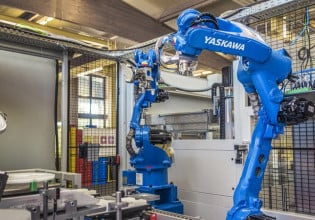Wenglor launches New Ultrasonic and Contrast Detecting Sensors
Wenglor has two new sensors available: the U18T ultrasonic sensor in a stainless steel housing and the P1PW high-speed contrast sensor, both of which are equipped with switching and IO-Link outputs.
Wenglor has recently announced a pair of new products: the long-range U18T ultrasonic distance sensor and the white-light P1PW contrast proximity sensor.
New Ultrasonic Sensor in a Stainless Steel Housing
The new U18T sensors are designed with a stainless steel housing to offer users a robust corrosive resistant sensor that includes an IP67 rating for protection from the tough industrial environment.
Wenglor has made an effort to produce a product that it hopes will give users high stability and reliability.
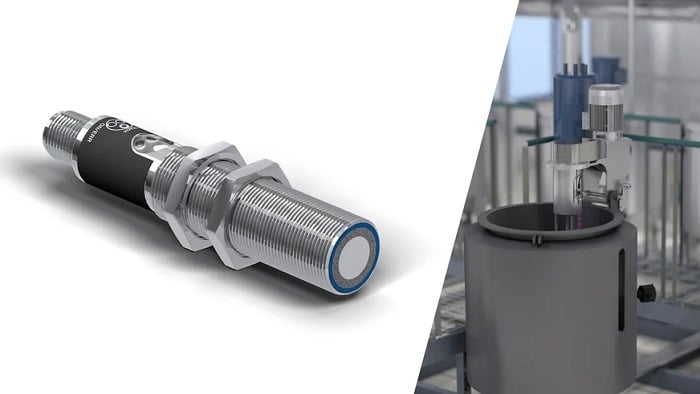
The U18T offers users an impressive sensing range of up to 2,400 mm. Image used courtesy of Wenglor
The U18T can detect many different types of surfaces, including some that are traditionally difficult to detect, like dark or transparent surfaces. Wenglor claims that the sensors can even be used to detect mirrored surfaces. Ease of integration into existing plant infrastructure is facilitated through the use of an IO-Link interface. An impressive detection range of 2,400 mm (nearly 95 in) gives users a wide range of installation possibilities.
Features of the U18T Ultrasonic Sensor
The U18T has some impressive features that can give end users an ultrasonic sensor tailored to their specific needs. Both analog and switching outputs are available, depending on the specific needs of the installation to provide simple object detection or a more specific analog-based range readout. In addition, two modes are available: reflex and beam modes. The range for reflex mode is 1,200 mm and the range for beam mode is 2,400 mm.
A differing number of sensors can be operated in parallel depending on the scenario. Automatic synchronous mode is ideal for detecting objects without any delay, and a total of 32 sensors can be operated in parallel when using automatic synchronous mode. In order to achieve a level of monitoring for large areas, multiplex operation is the ideal mode, allowing joint operation for up to 16 sensors without mutual inteference.
Wenglor’s New P1PW Contrast Sensors
In addition to the new U18T, Wenglor has also announced the release of the P1PW, a sensor specifically designed to detect contrast differences. Using a white light output, these sensors can reliably discern markings of diverse color intensity against different backgrounds, even at high speed. Additionally, a job memory feature ensures swift batch changes without the need for individual settings during operation.
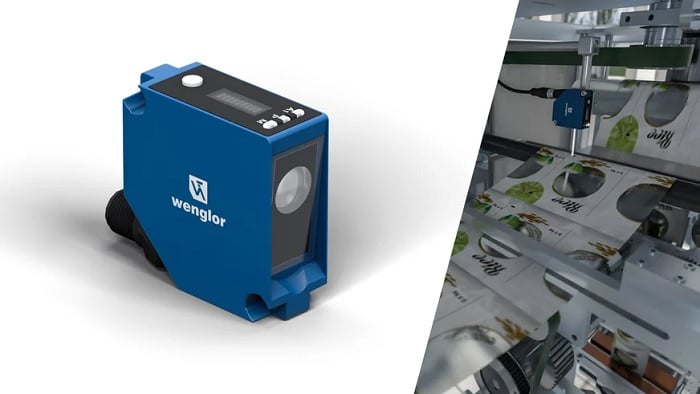
The new P1PW gives users access to reliable contrast sensing capabilities. Image used courtesy of Wenglor
With three integrated operating modes, they can function as print mark readers, contrast sensors, and color difference detectors. In print mark mode, they leverage the most significant contrast difference in a color channel to reliably distinguish between the mark and the background. Contrast mode evaluates the average light intensity across all color channels to detect contrast disparities. Color mode facilitates the reliable detection of color differences by utilizing the signal values of all color channels.
Features of the P1PW
High process speeds are not a problem for the P1PW because the sensor has a high switching frequency of 50 kHz. The automatic adjustment of light intensity ensures precise detection across a wide range of surfaces, including highly reflective ones. The emitted homogeneous and rectangular light spot, visible as clear white light, reliably detects even the smallest objects.
Teach-in is intuitive with a simple button press, while mode selection is conveniently set directly on the unit, eliminating the need for additional setting tools. The integrated LED bar display provides clear feedback on teach-in quality and process stability throughout ongoing operations. Easy operation facilitates optimal adaptation to challenging applications. Product information is readily accessible via a printed QR code. Mounting the sensors is hassle-free, with flush and flexible mounting facilitated by insertable nuts and a rotatable plug offering 270-degree rotation.


